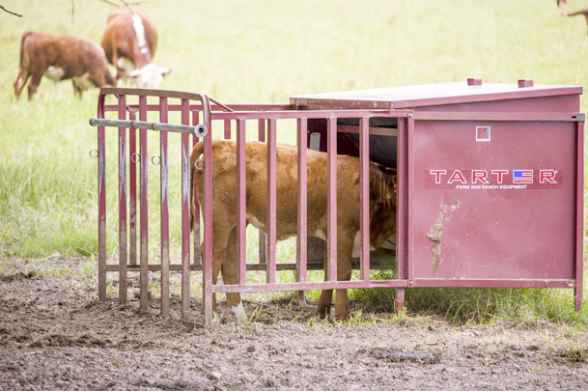COVID-19-related impacts on the beef industry have many producers wondering when the best time is to market this year’s calf crop and asking if it pays to hold calves and put extra weight on them.
Livestock economists say the key this year may be maintaining flexibility in marketing calves, so you have the ability to move calves when windows open.
Preconditioning programs can put more money in your pocket. Superior Livestock 2018 sales data demonstrates providing buyers with a signed certificate, especially one verified by your veterinarian, documenting the health history of your calves will result in a premium of $15 to $35 per head.
Preconditioning programs also give calves the best opportunity to develop their immune system and reduce the chances of them getting sick. This is especially important if you’re considering keeping calves longer and adding extra pounds.
Here are several practices to keep in mind as you wean and background calves:
1. Rethink abrupt weaning
It’s been well documented that abrupt weaning causes stress, which results in reduced function of the calf’s immune system and impaired ability to fight disease. Cortisol, which naturally releases under stressful conditions, suppresses the immune system. One type of white blood cells – called neutrophils – are the first line of defense against disease, yet their functions are decreased for the first seven days post-weaning. If a calf is vaccinated during this time, its ability to respond properly to a vaccine may be limited.
2. Vaccinate preweaning
A better option is to vaccinate calves prior to weaning. This allows the calf’s immune system to appropriately respond to the vaccine while on its cow, plus it provides time prior to the next vaccination. It’s good to discuss vaccine protocols with your veterinarian and make a plan based on your operation’s goals, where the calves are headed post-weaning and the disease risk in your area.
3. Proper deworming
Calves with subclinical worm infections can have decreased feed intake, feed efficiency and poor immune response to vaccines. Using creep feed and feed and mineral forms of fenbendazole requires relatively little time and labor and can be highly effective.
4. Implants
If retaining ownership or selling and/or trying to add weight to calves post-weaning, then giving an implant preweaning is very beneficial. Research shows zeranol used in backgrounded cattle provides close to a 10% improvement in average daily gain (ADG).
If cattle have 2 pounds of gain per day without an implant in a 60-day preconditioning period, implanting with zeranol will increase ADG to 2.2 pounds per day. This equates to 12 pounds additional weight gain in 60 days.
5. Creep feed and water training
Nutrition is the building block of health and performance. Providing creep feed – formulated based on the calf’s life stage – helps get calves used to eating on their own and prepares the rumen for the next stage of production.
Fresh, clean and cool water supplied via a water trough or automatic waterer versus water on the ground helps improve health and performance. Incorporating water training techniques where calves learn where the water trough is located and how to use it prior to weaning is helpful.
6. Low-stress cattle handling
There are lots of resources on low-stress cattle handling. Temperament impacts the health and performance of animals. If calves have been handled using low-stress methods and learned to be comfortable around people, they will go on to be calmer in the next phase.
Experts say that even with all that has gone on in 2020, fall-weaned calves look to still price similar to a year ago and could be even higher than a year ago in fourth quarter. Developing a group of calves properly and preparing them for the next stage can help to minimize disease outbreaks and maximize profits. end mark
Photo by Cassidy Woolsey
Jacques Fuselier for Progressive Cattle
Cattle Technical Services
Merck Animal Health








